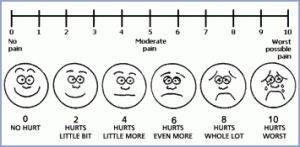As our Internet-based lives and the ways in which we communicate and engage with each other continue to undergo change, we increasingly see a form of shorthand taking place.
It turns out that emojis – those little symbols we increasingly see in text messages, emails, and on social media sites – are rapidly becoming a language of their own.
![]() The emoji heart was recently named the “Word of the Year” by the Global Language Monitor, marking the first time that an image has captured this honor. Of course, that’s because this emoji is used billions of time each day around the world from Beijing to Bangor. Our manners of speaking and writing may be wildly diverse, but emojis are rapidly becoming a universal language. Since December 2013, emoji use has jumped more than 50% on Twitter, up to nearly 17 million per day.
The emoji heart was recently named the “Word of the Year” by the Global Language Monitor, marking the first time that an image has captured this honor. Of course, that’s because this emoji is used billions of time each day around the world from Beijing to Bangor. Our manners of speaking and writing may be wildly diverse, but emojis are rapidly becoming a universal language. Since December 2013, emoji use has jumped more than 50% on Twitter, up to nearly 17 million per day.
If you think emojis are just cutesy icons that have no value or connection to the world of radio, think again. Their history goes back a long way, re-energized by the digital, social, and emotional act of personal engagement.
That’s ironic because these little emoticons have been with us for decades, only to be turbo-charged by mobile devices and the Internet. The movement goes all the way back to the original smiley face (“Have A Nice Day!”) from the early ’60s. It was originally invented by an agency exec named Harvey Ball who came up with the first emoji to help boost the morale of his insurance company client.
I vividly recall that when our kids were small, our pediatricians used a series of emoticons to help adolescents describe their level of pain by pointing to the one that best described their feelings. And that’s what emoji are all about in digital discourse – providing us with a simple, visual language that is easy to use and universally understood.
As we’ve moved from verbal communication to long form writing to 140 characters or less, emoji are rapidly becoming a way for people to express their feelings on the fly – like while they’re using their mobile phones. It’s noteworthy that Instagram is allowing emoji hashtags, another sign that pictures and characters are increasingly being used to help people quickly connect and emote.
There’s more to emoji than you might think. The Unicom Consortium is the body that helps people around the world use computers regardless of language. They’re the group that approves the use of new emoji. And it turns out there are now 37 new characters being considered, including a taco, a face with rolling eyes (this will be helpful), and a unicorn face.
In many ways, emoji are a universal language that breaks down cultural and generational barriers. They provide a way for all people to express their feelings and emotions, regardless of educational background and language barriers.
So how can radio stations and personalities use emoji to help their audiences emote, vote, and simply have fun?
Jay Baer’s “Convince & Convert” group recently published an article about “Emoji Social Media Campaigns” written by Jessica Gioglio. She highlights fascinating branding campaigns using emoji/emoticons from IKEA, Domino’s Pizza, and the World Wildlife Fund. This last example is fascinating because its agency, Wieden+Kennedy London, made the discovery that 17 of the animal emojis most often used are on the endangered list. They then created variations of these emoji and used #EndangeredEmoji to spread the word socially.
Twitter users can use these emoji by retweeting them.
There’s something here for brands – stations and personalities – that are intuitive enough to discover new ways to connect with their communities of fans.
It is hard to believe that just a decade or so ago, listeners picked up a phone and called the studio or request line to talk to their favorite radio stations. From social media to email to other avenues, fans have discovered new-found voices – or characters – and they’re using them.
Along the way, radio is discovering that content can be created and shared using on-demand content (podcasts) as well as visuals (in the form of pictures and videos) – neither of which was even a consideration back in the ‘90s.
Finding new visual pathways that can connect with fans is something that every relevant brand should aspire to do, capturing the zeitgeist of the moment.
Human communication and personal interplay are changing. And radio can share in this by fostering and furthering these human connections. It has never been more important for stations to become aware of these new connection points – and look for ways in which to participate. Fans are enjoying the ability to express themselves in new ways, and that should prompt radio to exude that same attitude.
It’s another way to tap into emotions.
Thanks to Larry Rosin for planting seeds.
- What To Do If Your Radio Station Goes Through A Midlife Crisis - April 25, 2025
- A 2020 Lesson?It Could All Be Gone In A Flash - April 24, 2025
- How AI Can Give Radio Personalities More…PERSONALITY - April 23, 2025




Leave a Reply